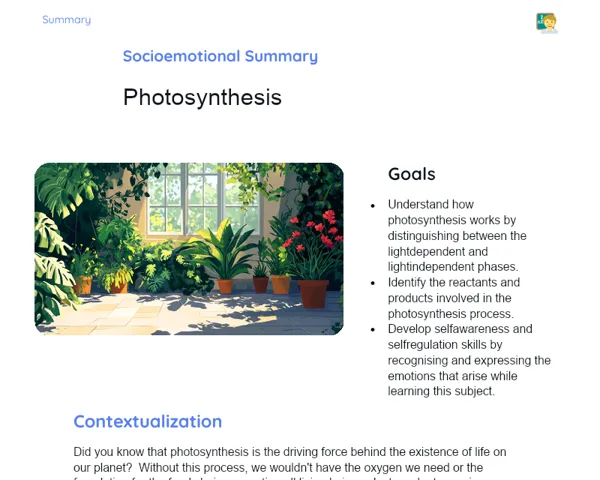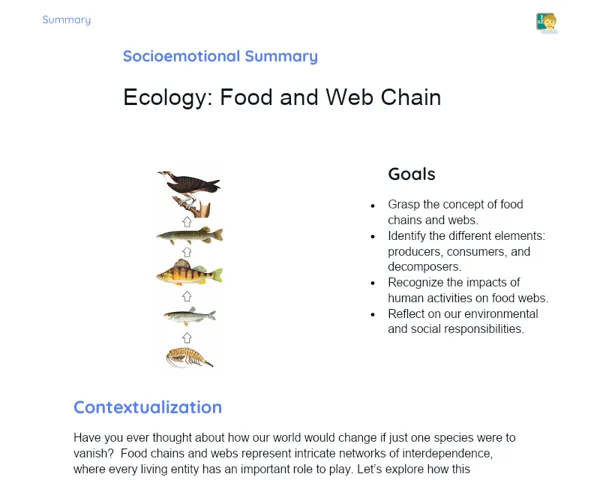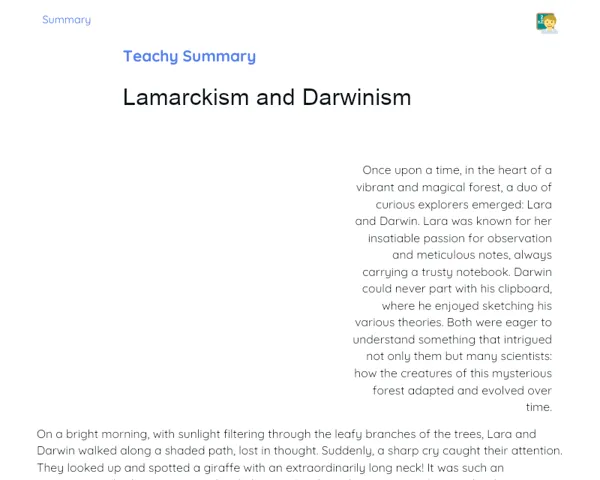Socioemotional Summary Conclusion
Goals
1. Identify and describe the various types of respiration in animals, especially pulmonary and branchial respiration.
2. Differentiate the key characteristics of each type of respiratory system and their roles across different animal groups.
Contextualization
Did you know that the way animals breathe is a fascinating aspect of nature? Imagine a fish using its gills to draw oxygen from water or a mammal using its lungs to inhale air! Each respiratory system showcases an extraordinary adaptation, reflecting how species interact with their surroundings. By delving into these systems, we’re not only exploring biology but also uncovering the remarkable ways life adapts!
Exercising Your Knowledge
Respiratory System
The respiratory system is vital for gas exchange between organisms and their environment. It facilitates the intake of oxygen, essential for energy production in cells, and the removal of carbon dioxide, a waste product of this process. Each respiratory system has evolved to meet the unique needs of different animal groups, demonstrating their adaptability to the environment.
-
Gas Exchange: Crucial for obtaining oxygen and getting rid of carbon dioxide.
-
Evolutionary Adaptations: Different systems evolved for specific environments.
-
Energetic Function: The oxygen acquired is fundamental for energy production in cells via cellular respiration.
Pulmonary Respiration
Pulmonary respiration is common among mammals, birds, reptiles, and many amphibians. The lungs are flexible organs where gas exchange takes place. This type of respiration is an adaptation for animals thriving in terrestrial environments, allowing them to absorb oxygen directly from the air.
-
Lungs: Soft structures where gas exchange happens.
-
Terrestrial Respiration: Adapted to obtain oxygen from the atmosphere.
-
Alveoli: Tiny sacs in the lungs where gas exchange occurs with the blood.
Branchial Respiration
Branchial respiration is typical of fish and some aquatic amphibians. The gills are specialized structures that facilitate the extraction of oxygen from water. This type of respiration is an adaptation to life in water, where oxygen is dissolved rather than found in the air.
-
Gills: Structures that filter oxygen from water.
-
Aquatic Respiration: Adapted to extract dissolved oxygen from the water.
-
Countercurrent Circulation: An effective mechanism for maximizing oxygen uptake.
Key Terms
-
Respiratory System
-
Pulmonary Respiration
-
Branchial Respiration
-
Gas Exchange
-
Alveoli
-
Gills
-
Evolutionary Adaptation
-
Countercurrent Circulation
For Reflection
-
How can studying animal respiration inform us about our need to adapt to environmental changes?
-
In what ways can our understanding of various respiratory systems enhance our own breathing practices and emotional wellness?
-
What insights into resilience can we gain from observing how animals have developed different respiratory systems?
Important Conclusions
-
We have learned about the various types of respiration in animals, including pulmonary and branchial respiration.
-
We explored the characteristics of different respiratory systems and how they adapt to the habitats where animals reside.
-
We contemplated how these respiratory systems can teach us about adaptation, resilience, and the significance of biological functions.
Impacts on Society
Studying animal respiratory systems deepens our understanding of life's adaptability and resilience on Earth. For instance, the way fish breathe underwater with their gills serves as an inspiration for enhancing our own knowledge of respiratory functioning and appreciating biological diversity. Furthermore, this knowledge can help develop biotechnological advancements, such as more efficient artificial ventilators that can save lives in critical situations.
In our day-to-day lives, comprehending how respiration works can bolster our health and well-being. Techniques like deep breathing are vital for reducing stress and enhancing concentration, which are crucial for academic success and emotional balance. Remembering that respiration serves as a bridge between the body and mind encourages us to value this essential process, ultimately improving our quality of life.
Dealing with Emotions
To manage your emotions while studying respiratory systems better, I recommend practicing the RULER method at home. Begin by recognizing how you feel while exploring this topic. Are you curious? Anxious? Next, understand the root of these feelings. Accurately identify your emotions, for example, saying, 'I feel curious when I learn something new.' Express this emotion constructively—perhaps by sharing your findings with friends or family. Lastly, regulate your emotions through deep breathing, especially if you feel overwhelmed. Remember, understanding our emotions leads to more effective and enjoyable learning. 🚀
Study Tips
-
Utilize diagrams and images to visualize the different respiratory systems, as this will aid comprehension and retention!
-
Form study groups with your classmates. Discussing and sharing insights assists in solidifying the content.
-
Link the studied material to daily experiences. For example, observe how your breathing varies with different activities and conditions.



